A groundbreaking archaeological discovery has been made in the Yumurtalık district of Adana, located in southern Turkey. A remarkable mosaic depicting Eros, the Greek god of love, riding a horse with the lower body of a fish, has been uncovered. This creature, known as the Hippocampus in Greek mythology, is a unique representation of the god and offers invaluable insights into ancient art and culture. Notably, this mosaic is the only known example of its kind in the world.
The Discovery: A Glimpse into Ancient Art
The mosaic was discovered during excavations initiated by the Adana Museum Directorate. The mosaic was found within the ruins of a villa, believed to have been owned by a high-ranking state official during the late Roman or early Byzantine era. Made from marble, glass, and stone, the artwork is a masterpiece of craftsmanship, showcasing the intricate and sophisticated mosaic techniques that were prevalent in the ancient world.
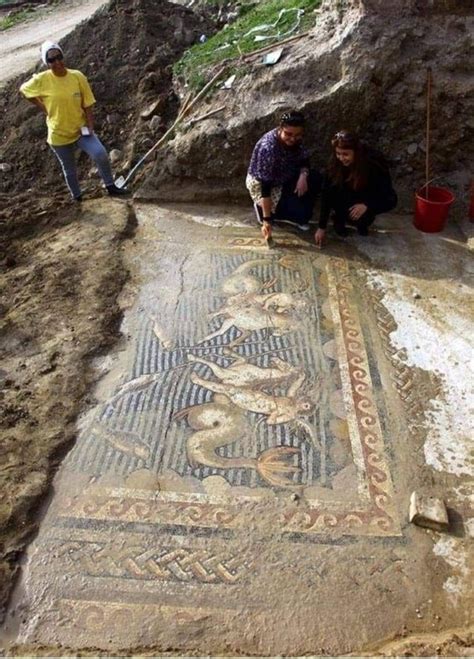
The Significance of the Hippocampus Depiction
The depiction of Eros riding the Hippocampus reflects the rich and complex world of Greek mythology. The Hippocampus, a half-fish, half-horse creature, is often associated with the sea and the divine, symbolizing both beauty and mystery. In Greek mythology, Eros is known for his ability to invoke love and desire, and his connection with the Hippocampus highlights the intertwining of nature and the supernatural. This mosaic stands out not only for its artistic brilliance but also for the unique portrayal of this mythical figure.
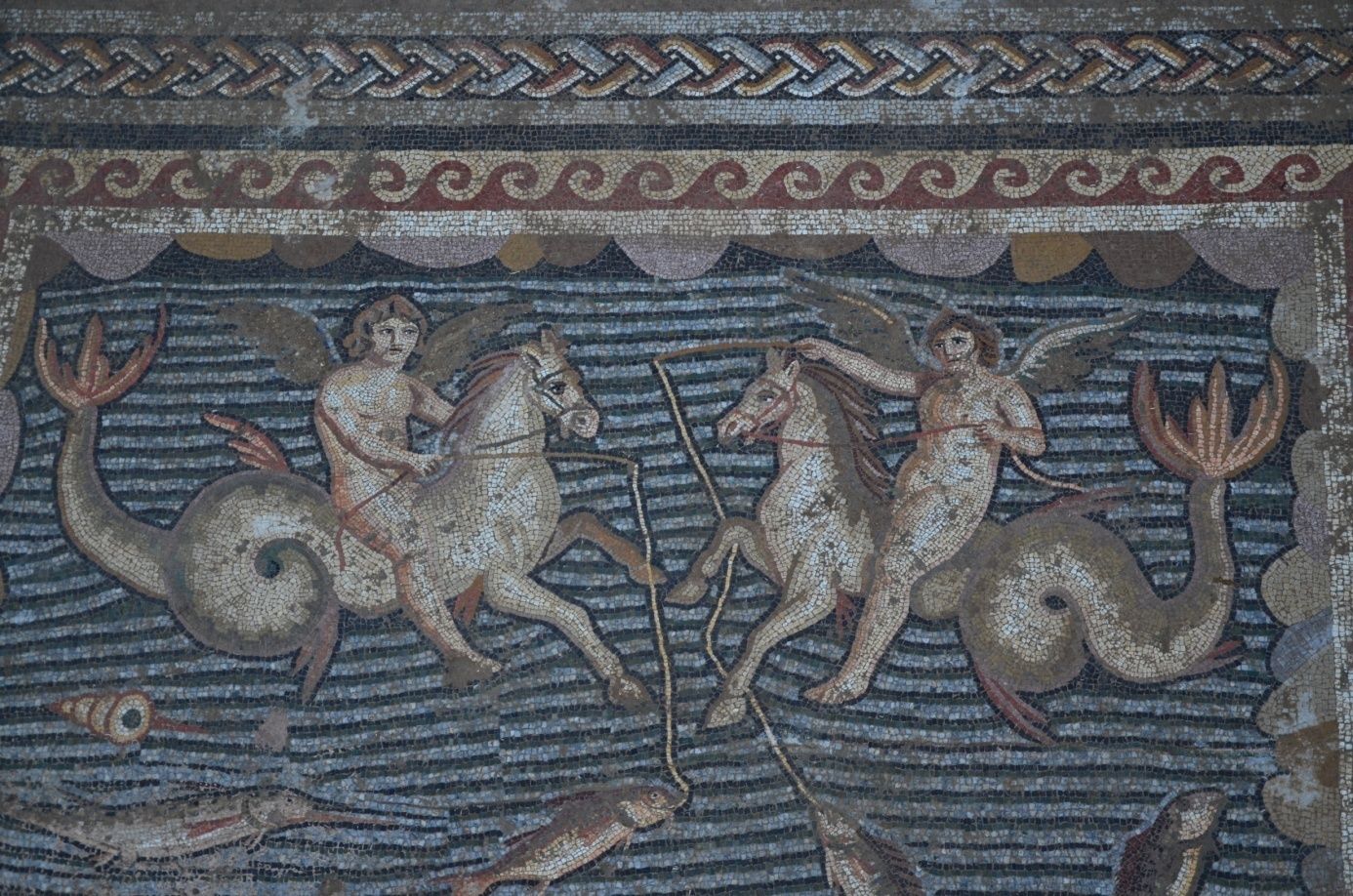
Cultural and Historical Context
This discovery sheds light on the cultural and social dynamics of the time. The mosaic’s location within a villa owned by a high-ranking state official suggests that such artworks were likely a symbol of status and sophistication in Roman and Byzantine society. The influence of Greek mythology in the region during this period was profound, and depictions of deities like Eros were common in elite spaces. Artworks like these were not just decorative but also served as a means of displaying one’s cultural knowledge and connections to the divine.
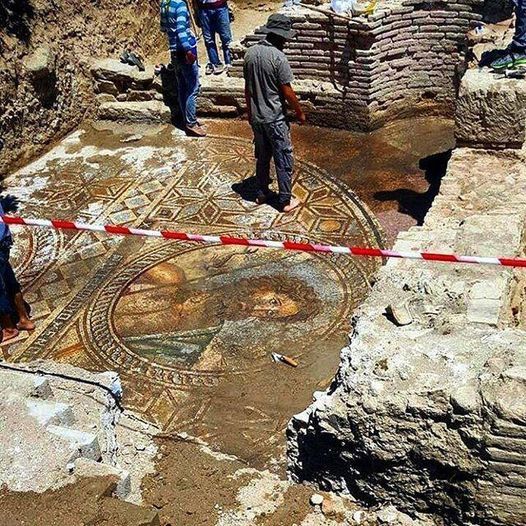
The Artistic and Technical Achievements
The mosaic’s combination of marble, glass, and stone reveals the high level of artistry and technical skill involved in its creation. Ancient mosaics were painstakingly crafted using tiny, precisely cut pieces of material, and this mosaic is no exception. The level of detail in Eros’s figure, with his graceful pose and the dynamic depiction of the Hippocampus, reflects the mastery of ancient artisans who specialized in this medium. The vibrant colors and the intricate patterns are a testament to the advanced techniques employed by mosaicists in the ancient Mediterranean world.
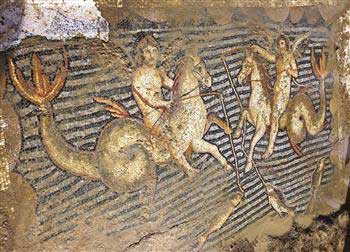
Preserving Ancient Heritage
This unique mosaic is not only a significant artistic achievement but also an important cultural artifact. As with all ancient artworks, it is crucial to ensure that these discoveries are preserved for future generations. Mosaics, in particular, are vulnerable to the elements, erosion, and human activity, which makes their protection a priority for archaeologists and historians. This discovery highlights the importance of preserving our cultural heritage, as it offers invaluable insight into the artistic, social, and religious practices of the past.
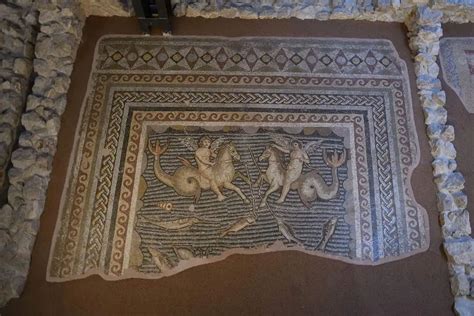
Ongoing Research and Analysis
Archaeologists and historians are currently conducting detailed research to analyze the age, origin, and cultural context of the mosaic. This research aims to deepen our understanding of how Greek mythology intersected with local traditions in ancient Anatolia. Further studies will likely reveal more about the role of mythological representations in the daily lives of the people who lived in this region and the influence of Hellenistic culture on the Roman and Byzantine periods.
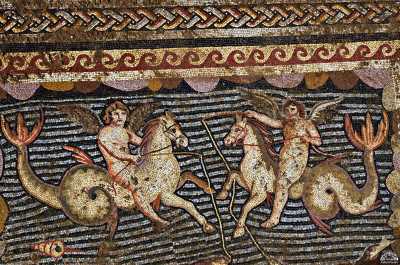
Conclusion: A Window into the Past
The discovery of the Eros mosaic depicting the Hippocampus is a truly unique find that adds to the growing body of knowledge about ancient Mediterranean cultures. It offers us a rare glimpse into the world of Greek mythology and the artistic traditions that flourished in the Roman and Byzantine eras. As research on this artifact continues, it promises to reveal even more about the cultural, social, and artistic dynamics of ancient Anatolia, while also reminding us of the importance of preserving such treasures for future generations.
This extraordinary mosaic not only highlights the sophistication of ancient art but also underscores the enduring influence of Greek mythology in the ancient world.

